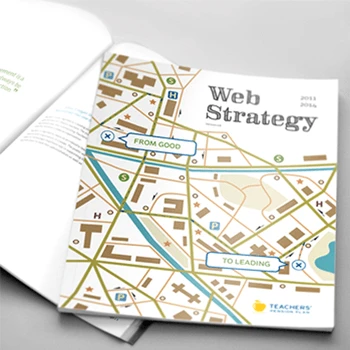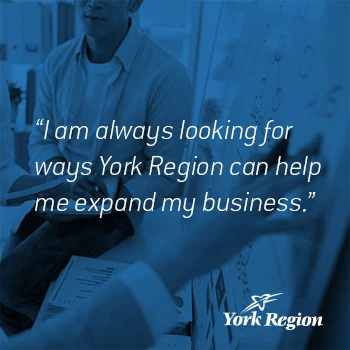What exactly is web journey mapping and why do we need it?
Web journey mapping visualizes and connects every interaction and impression that audiences have as they use various channels to access your web content. It looks at the entire end-to-end interaction people have with your organization, going beyond the bounds of direct product interaction to capture everything that leads up to and follows web experiences. This creates a powerful differentiator through consistent web experiences.
Tip: Start by identifying all the channels and touchpoints where users might encounter your web content rather than just mapping the website itself.
How does web journey mapping connect to your Experience Thinking framework?
Through our Experience Thinking framework, web journey mapping integrates brand experience, content experience, product experience, and service experience into complete user journey understanding. Journey mapping captures how users move between these different experience quadrants and reveals where disconnects occur that undermine the intended experience strategy.
Tip: Map journeys across all four Experience Thinking quadrants rather than just the digital touchpoints to understand complete experience integration.
What makes journey mapping different from user flow diagrams or site maps?
Journey mapping captures the complete experience lifecycle including emotions, motivations, context, pain points, and opportunities beyond just functional steps. While user flows show task sequences and site maps show content organization, journey maps reveal why users behave as they do and how they feel throughout their experience with your organization.
Tip: Include emotional responses and external influences in your mapping rather than just documenting internal process steps.
How does journey mapping support business strategy and innovation?
Journey maps provide a full view of the entire experience lifecycle that guides both design decisions and strategic planning. They reveal innovation opportunities, help prioritize investments, and identify where experience improvements can create competitive advantages. Maps become invaluable tools for business strategy by connecting user needs to business outcomes.
Tip: Use journey insights to inform budget allocation and strategic planning rather than just design improvements.
What's the relationship between personas and journey mapping?
Journey mapping is a natural extension of persona research - once you understand who your personas are, you need to research what they do, why, and how they do it. Each persona may have different journey patterns, motivations, and pain points that require specific mapping attention. Persona-based journey mapping ensures experiences serve actual user needs rather than generic assumptions.
Tip: Create separate journey maps for your primary personas rather than trying to create one generic journey that serves everyone.
How does journey mapping help break down organizational silos?
Journey mapping reveals how different departments and functions contribute to user experiences, showing where coordination gaps create user friction. Maps help organizations understand that user journeys cross departmental boundaries and require collaborative solutions. This shared understanding breaks down silos by creating common goals around user success.
Tip: Include representatives from all departments that touch user experiences in journey mapping workshops to build shared understanding.
What role does the customer-to-user-to-client lifecycle play in journey mapping?
Through our Experience Thinking approach, we map how audiences evolve from customers (who buy) to users (who interact) to clients (who advocate) throughout their relationship with your organization. This lifecycle perspective ensures journey mapping addresses different motivations and needs at each stage rather than treating all users identically.
Tip: Map how user motivations and behaviors change as they move through the customer-user-client lifecycle stages.
What research methods do you use to create accurate journey maps?
We use ethnographic observation, contextual inquiry, interviews, workshops with stakeholders and customers, focus groups, and surveys to understand actual user experiences. Research is observational, participatory, and collaborative, combining attitude, perception, and behavior research to capture the complete experience reality rather than assumptions.
Tip: Combine multiple research methods to validate journey insights rather than relying on single data sources that might miss important experience elements.
How do you involve key stakeholders in the journey mapping process?
Stakeholder involvement includes workshops, interviews, and collaborative analysis sessions that capture internal knowledge while validating insights against external user research. We work with stakeholders to understand business context, operational constraints, and strategic objectives that influence experience design. This ensures maps reflect both user needs and organizational realities.
Tip: Include stakeholders from different departments and levels to get complete organizational perspective on user experiences.
What's your approach to researching multi-channel user experiences?
Multi-channel research examines how users move between digital, physical, and human touchpoints throughout their journey, understanding the context and motivations for channel switching. We research the bridges between channels and identify where users experience friction or confusion during transitions. This reveals opportunities for channel integration improvements.
Tip: Research why users choose different channels at different journey stages rather than just documenting which channels they use.
How do you validate journey maps with real users and customers?
Map validation includes additional interviews, observations, surveys, and usability testing that confirm journey accuracy and reveal gaps in understanding. We test journey maps with actual users to ensure they accurately represent real experiences rather than internal assumptions. Validation helps refine maps and identify areas needing additional research.
Tip: Test journey maps with users who have recently completed the journey rather than just asking them to recall past experiences.
What's your approach to researching emotional aspects of user journeys?
Emotional research captures feelings and emotions at each journey stage, understanding how users respond to pain points and positive experience moments. We use techniques that help users articulate emotional responses and identify what drives emotional highs and lows throughout their experience. Emotions add human depth to journeys and reveal improvement opportunities.
Tip: Use emotional journey mapping to prioritize improvements based on emotional impact rather than just functional efficiency.
How do you research complex B2B or organizational user journeys?
B2B journey research examines both individual user needs and organizational decision-making processes, understanding how multiple stakeholders influence and participate in journeys. We research formal and informal approval processes, collaborative workflows, and organizational constraints that affect user experience. This captures the complete organizational context of user journeys.
Tip: Include decision influencers and approvers in B2B journey research rather than just end users to understand complete organizational journey dynamics.
How does artificial intelligence enhance journey mapping research and analysis?
AI enhances journey mapping by analyzing large datasets to identify user behavior patterns, processing qualitative research for trend identification, and generating initial journey hypotheses for human validation. We use AI to accelerate pattern recognition while maintaining human oversight for strategic interpretation and empathy-based insights that AI cannot provide.
Tip: Use AI to identify journey patterns and anomalies in your data while relying on human research for understanding motivations and emotional responses.
What elements do you include in comprehensive journey maps?
Comprehensive maps include experience lifecycle phases, goals and motivations, key activities, context and frequency, experience points, emotions, people involved, artifacts and materials, and pain points with opportunities. Each element reveals different aspects of user experience that inform design and strategy decisions. This detail enables actionable insights rather than high-level descriptions.
Tip: Include enough detail to enable specific design decisions rather than creating maps that are too general to be actionable.
How do you determine the scope and boundaries of journey maps?
Journey scope depends on research objectives, user goals, and business strategy needs. We map from initial awareness through advocacy and even recycling or service cancellation to capture the complete lifecycle. Scope decisions balance comprehensive understanding with practical usability for design and strategy work.
Tip: Define clear journey boundaries based on user goals rather than internal organizational processes to maintain user-centered perspective.
What's your approach to mapping current versus future state journeys?
Current state mapping documents existing experiences to identify pain points and opportunities, while future state mapping envisions improved experiences that address identified issues. We often create both to show the transformation journey and help stakeholders understand the gap between current reality and desired experience. This supports strategic planning and investment prioritization.
Tip: Start with current state mapping to establish baseline understanding before designing future state improvements.
How do you capture context and environmental factors in journey maps?
Context mapping includes where experiences happen, when they occur, duration and frequency, attention levels available, and environmental constraints or enablers. Understanding context helps explain why users behave differently in various situations and informs design solutions that work within real-world constraints rather than ideal conditions.
Tip: Research context variations and edge cases rather than just typical usage scenarios to design more robust experiences.
What's your process for identifying and documenting pain points and opportunities?
Pain point identification examines frictions, difficulties, and problems users experience at each journey stage, understanding both functional and emotional sources of frustration. Opportunities emerge from pain points, unmet needs, and moments where enhanced experiences could create competitive advantages. This analysis drives improvement prioritization.
Tip: Prioritize pain points based on both frequency and emotional impact rather than just technical difficulty to address the most important user problems first.
How do you map the role of people and human interactions within journeys?
People mapping identifies humans inside and outside the organization who interact with users throughout their journey, including staff, agents, family, advisors, and peer influencers. Understanding these human touchpoints reveals opportunities for service improvements and identifies where human interactions can enhance or detract from experiences.
Tip: Map informal influencers and support people in user journeys rather than just official organizational contacts to understand complete social context.
How does foresight design influence journey mapping methodology?
Foresight design helps anticipate how user journeys might evolve with changing technology, cultural shifts, and business model innovations. We map current journeys while considering emerging trends that might affect user expectations and behaviors. This future-oriented perspective ensures journey maps remain relevant and inform strategic planning beyond immediate improvements.
Tip: Include trend analysis and scenario planning in journey mapping to prepare for evolving user expectations rather than just optimizing current experiences.
How do you design journey maps for different stakeholder audiences?
Map design varies based on audience needs - executives need strategic overviews, designers need detailed interaction insights, and operational staff need implementation guidance. We create different views and levels of detail from the same underlying research to serve various stakeholder purposes while maintaining consistency in core insights.
Tip: Create multiple journey map formats for different stakeholder needs rather than trying to serve all audiences with one complex map.
What's your approach to making journey maps actionable and usable?
Actionable maps connect insights to specific improvement opportunities, design recommendations, and strategic decisions. We organize maps to highlight priority issues and include clear next steps for addressing identified problems. Maps become working documents that guide ongoing improvement efforts rather than static documentation.
Tip: Include specific improvement recommendations and success metrics in journey maps rather than just documenting current experience problems.
How do you communicate complex journey insights effectively?
Effective communication uses visual storytelling, progressive disclosure of detail, and clear narrative structure that guides stakeholders through key insights. We use layouts, colors, and visual hierarchy to make complex information accessible while preserving important nuances. Communication design supports understanding and decision-making.
Tip: Use visual storytelling techniques to make journey maps engaging and memorable rather than just functional documentation.
What delivery formats work best for different organizational contexts?
Delivery formats range from detailed poster-sized maps for workshop settings to digital interactive maps for ongoing reference, executive summary presentations for leadership review, and modular maps that can be updated as experiences evolve. Format selection depends on organizational culture, usage patterns, and maintenance needs.
Tip: Choose delivery formats that fit your organizational workflow and update processes rather than just visual preferences.
How do you ensure journey maps remain current and useful over time?
Map maintenance requires regular validation with users, updates based on experience changes, and integration with ongoing measurement and analytics. We design maps and organizational processes that support evolution while preserving historical insights. Living maps adapt to changing experiences while maintaining strategic value.
Tip: Plan journey map maintenance and update processes from the beginning rather than treating maps as one-time deliverables.
What's your approach to facilitating stakeholder workshops around journey maps?
Workshop facilitation uses journey maps as collaboration tools for identifying improvement opportunities, aligning stakeholder understanding, and building consensus around user experience priorities. We structure workshops to generate actionable outcomes while ensuring all stakeholder perspectives are heard and integrated into planning.
Tip: Use journey mapping workshops to build stakeholder empathy and alignment rather than just sharing completed research findings.
How do journey maps inform business strategy and investment decisions?
Journey maps reveal where experience improvements can create competitive advantages, inform resource allocation priorities, and identify innovation opportunities that align with user needs. Maps connect user experience quality to business outcomes by showing how experience improvements drive customer loyalty, advocacy, and revenue growth.
Tip: Translate journey insights into business impact projections to support strategic investment decisions rather than just documenting user experience problems.
What's your approach to using journey maps for organizational transformation?
Organizational transformation uses journey maps to reveal collaboration needs, identify process improvement opportunities, and align departments around shared user experience goals. Maps show how organizational structure and processes affect user experiences, guiding change management and operational improvements that enhance experience delivery.
Tip: Use journey maps to identify organizational changes needed to support improved user experiences rather than just documenting current experience problems.
How do journey maps support innovation and new experience development?
Innovation applications include sketching, journey mapping, and storyboarding that turn ideas into concrete experience concepts for stakeholder review and iteration. Journey mapping during innovation phases can depict dozens of experience scenarios, enabling good lifecycle coverage and feasibility exploration without significant development investment.
Tip: Use journey mapping early in innovation processes to explore experience concepts before committing to development rather than just documenting existing experiences.
How do you connect journey insights to specific design and development requirements?
Journey insights translate into user stories, design requirements, and development priorities that serve identified user needs and address documented pain points. We create clear connections between journey stages and specific functionality or content needs, ensuring design decisions support actual user goals and workflows.
Tip: Create user stories and design requirements directly from journey insights rather than treating mapping as separate from implementation planning.
What's your approach to measuring journey improvement success?
Success measurement tracks both user experience improvements and business outcomes resulting from journey optimization. We establish baseline measurements for journey pain points and monitor improvements in user satisfaction, task completion, emotional responses, and business metrics like conversion and retention rates.
Tip: Establish journey success metrics that connect user experience improvements to business outcomes rather than just measuring user satisfaction.
How do journey maps inform content strategy and information architecture?
Journey mapping reveals what information users need at different stages, how they seek and process information, and where content gaps create experience friction. Maps inform content prioritization, organization, and delivery strategies that support user goals throughout their journey rather than just optimizing individual content pieces.
Tip: Use journey insights to prioritize content development and organization based on user needs at different journey stages.
How do you use journey mapping to identify competitive advantages?
Competitive advantage identification examines where superior journey experiences can differentiate your organization from competitors, where industry standard practices create user frustration, and where innovation opportunities exist. Journey mapping reveals user needs that competitors aren't serving effectively, enabling strategic positioning through experience excellence.
Tip: Research competitor journey experiences to identify differentiation opportunities rather than just improving your own internal processes.
How do you prioritize journey improvement opportunities?
Prioritization balances user impact, business value, implementation feasibility, and strategic alignment to focus efforts on improvements that deliver maximum value. We consider both quick wins that build momentum and strategic investments that create sustainable competitive advantages. Priority frameworks help organizations make informed improvement decisions.
Tip: Balance quick wins with strategic improvements rather than just focusing on easy fixes that don't address fundamental experience issues.
What's your approach to phased journey improvement implementation?
Phased implementation starts with high-impact improvements that demonstrate value while building organizational capability for more complex changes. We sequence improvements to create positive momentum, address critical pain points first, and establish measurement systems that track progress. Phasing prevents overwhelming organizations while ensuring sustained improvement.
Tip: Plan improvement phases that build on each other rather than treating journey optimization as a one-time project.
How do you address journey pain points that span multiple departments?
Cross-departmental solutions require collaborative planning, shared accountability systems, and coordinated implementation approaches that align different organizational functions around user experience goals. We facilitate stakeholder workshops and develop governance frameworks that support coordinated journey improvements across organizational boundaries.
Tip: Create cross-departmental working groups for journey improvements rather than trying to solve multi-departmental problems within individual silos.
What support do you provide during journey improvement implementation?
Implementation support includes ongoing consultation, progress monitoring, stakeholder alignment facilitation, and adjustment guidance as organizations learn from improvement efforts. We provide frameworks and tools that enable internal management while offering expertise for complex challenges. Support ensures journey improvements achieve intended results.
Tip: Plan for ongoing support during journey improvement implementation rather than expecting immediate success without guidance and adjustment.
How do you measure and track journey improvement progress?
Progress tracking combines user experience metrics, operational efficiency measures, and business outcome indicators that demonstrate improvement value. We establish baseline measurements and regular review cycles that enable course correction when improvements don't achieve expected results. Measurement systems support continuous journey optimization.
Tip: Create measurement systems that track both leading and lagging indicators of journey improvement rather than just final outcome metrics.
What's your approach to scaling journey improvements across multiple user segments?
Scaling requires understanding how different user segments experience journeys differently and adapting improvements to serve diverse needs while maintaining efficiency. We develop scalable solution frameworks that can be customized for different segments while preserving core improvement benefits. Scaling approaches balance personalization with operational feasibility.
Tip: Design journey improvements that can be adapted for different user segments rather than creating completely separate solutions for each segment.
How do journey maps help cement customer loyalty and advocacy?
Journey mapping reveals opportunities to extend positive experiences and eliminate friction that drives customers away. By understanding the complete customer-to-user-to-client lifecycle, organizations can design experiences that transform customers into loyal advocates who promote the organization. Loyalty results from consistently positive journey experiences over time.
Tip: Focus journey improvements on moments that create emotional connection rather than just functional efficiency to build deeper customer loyalty.
What long-term organizational benefits result from journey mapping?
Long-term benefits include improved cross-departmental collaboration, user-centered decision making culture, reduced operational costs through efficiency improvements, increased revenue through better customer retention, and competitive advantages through superior experiences. Journey mapping transforms organizational culture toward experience focus.
Tip: Track organizational culture changes alongside user experience improvements to understand the complete value of journey mapping investment.
How do you help organizations build internal journey mapping capabilities?
Capability building includes training, methodology transfer, template and framework development, and coaching that enables organizations to conduct journey mapping independently. We provide tools and processes for ongoing journey research, analysis, and improvement while offering consultation for complex challenges. This builds sustainable experience optimization capabilities.
Tip: Focus on building internal journey mapping thinking and facilitation skills rather than just providing completed maps to ensure long-term organizational capability.
What role does leadership play in journey mapping success?
Leadership provides strategic vision, resource allocation, and organizational change support necessary for journey improvement implementation. Leaders champion user-centered decision making and maintain focus on experience quality throughout improvement challenges. Leadership support determines whether journey insights translate into organizational action.
Tip: Ensure leadership understands and can communicate the business value of journey-focused improvements to maintain organizational support through implementation challenges.
How do you help organizations maintain journey-focused culture over time?
Culture maintenance requires ongoing reinforcement through measurement systems, recognition programs, and decision-making frameworks that prioritize user experience. We help organizations embed journey thinking into regular operations while providing periodic reviews and updates that keep experience focus current with changing user needs.
Tip: Build journey thinking into organizational processes and reward systems rather than treating it as a separate initiative that might fade over time.
What trends in journey mapping should organizations prepare for?
Current trends include AI-enhanced journey analytics, real-time journey optimization, voice and conversational interface integration, privacy-conscious experience design, and multi-generational journey considerations. Through foresight design approaches, we help organizations prepare for evolving user expectations while maintaining current journey effectiveness.
Tip: Build journey mapping frameworks that can evolve with changing user behaviors and technology capabilities rather than optimizing only for current journey patterns.
How do journey maps support digital transformation initiatives?
Digital transformation uses journey maps to ensure technology investments serve actual user needs rather than just organizational efficiency goals. Maps guide platform decisions, integration priorities, and change management approaches that maintain experience quality throughout digital evolution. Journey focus prevents technology-driven transformation that ignores user impact.
Tip: Use journey maps to evaluate digital transformation decisions based on user experience impact rather than just technical capabilities or cost considerations.












